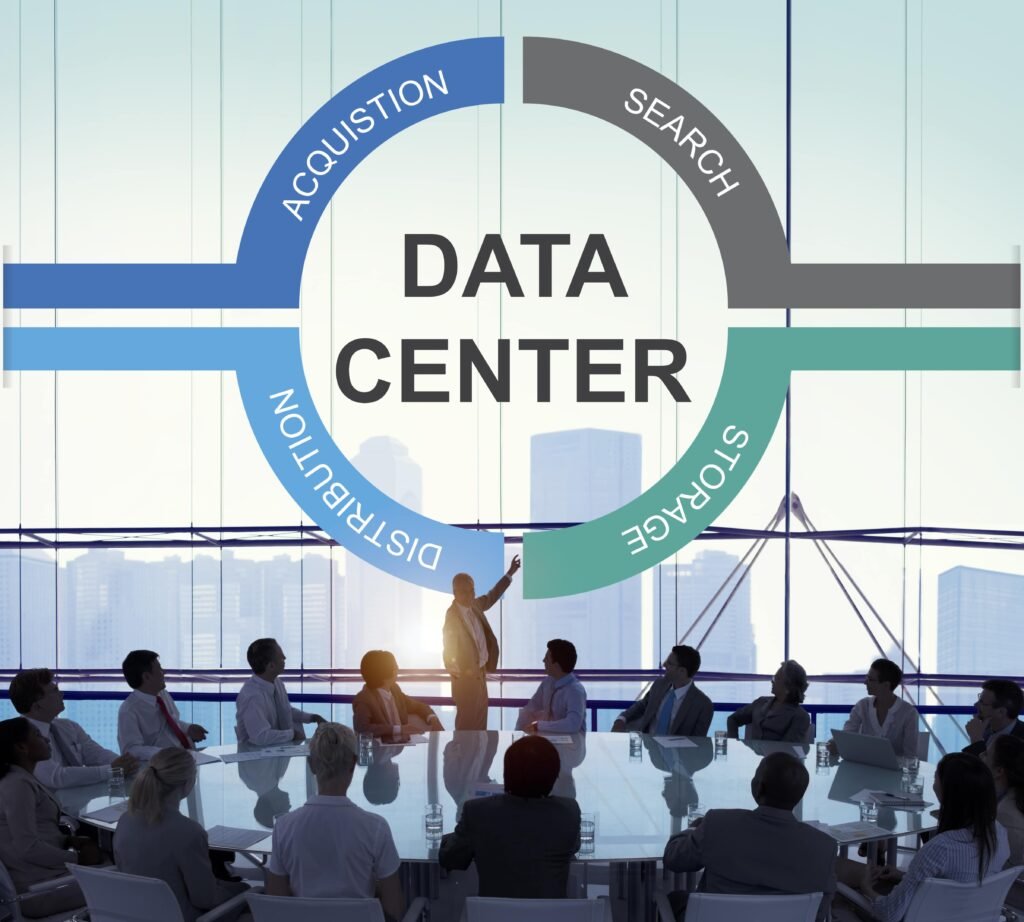
Think of enterprise data services as the plumbing of a building. The better the pipes, the better the water flows to taps. In a business, “pipes” are the data systems. Enterprise data services (EDS) are the systems, tools, and processes that move, manage, secure, and deliver data across the company.
According to Denodo, enterprise data services help make data accessible via APIs by uniting information from many systems (ERP, CRM, warehouses). As data flows in many directions, sales, operations, marketing, and IoT devices, these services ensure data is clean, timely, and ready to use.
Why They Matter: Benefits for Businesses
Enterprise data services offer many strong benefits, like turning chaos into a clean river of information.
1. Data Integration & Breaking Silos
Many companies have data trapped in separate systems, sales in one, operations in another. EDS brings them together so everyone sees the same view. This cuts duplicate work and mismatched facts.
2. Improved Data Quality & Trust
If data is messy, with duplicates, errors, and missing parts, people don’t trust it. Enterprise data services help remove errors, fill gaps, and standardize data formats. Then decision makers believe the reports.
3. Better Decision Making (Real-Time Insights)
Good data is like clean lenses for your eyes. When data is timely and accurate, executives can see trends, respond faster to market changes, and act with confidence. EDS supports real-time data delivery and analytics.
4. Security, Compliance & Governance
With rules like GDPR, CCPA, and other local laws, businesses must protect data. EDS enforces access controls, auditing, encryption, and policies so sensitive data doesn’t leak.
5. Scalability & Future Growth
As a business grows, data volume, variety, and velocity all expand. EDS are designed to scale. They allow adding new data sources, combining cloud and on-premise, and handling IoT or big data streams.
6. Cost Savings & Efficiency
Manual data processing is slow, error-prone, and expensive. With good services, automation takes over many tasks, freeing people for higher-value work. Also, fewer mistakes, less rework.
Key Components of Enterprise Data Services
To make EDS real, businesses use a few core components. Think of these as the parts of a machine.
- Data Integration / Ingestion: Collect data from many sources (databases, APIs, IoT).
- Data Transformation / Cleaning: Fix formatting, remove duplicates, standardize values.
- Data Delivery / APIs: Provide data via APIs or services so apps, BI tools, and users can access it. Denodo’s API-based delivery is a good example.
- Data Catalog & Metadata: A central index of what data exists, where it comes from, who owns it, and its lineage.
- Security & Governance: Role-based access, encryption, audits, compliance rules.
- Master Data Management (MDM): Ensuring key entities, customers, and products are consistent across systems.
- Analytics & Reporting: BI tools, dashboards, predictive models, etc.
Real World Use Cases
Here are examples of how enterprise data services are used in real businesses, like tools that bring life to ideas.
- Retail / E-commerce: Combining sales, inventory, and customer data to predict demand, manage the supply chain, and tailor marketing.
- Healthcare / Pharma: Merging patient records, lab systems, and hospital databases so doctors see full patient history with trust.
- Finance / Banking: Data services unify core banking, risk systems, customer analytics, and fraud detection.
- Manufacturing & IoT: Sensors create data. EDS collects, filters, and analyzes for preventive maintenance or quality control.
- Media and streaming: Track viewing data, content metrics, user profiles, and deliver personalized recommendations.
One blog says EDS is the backbone of modern business intelligence and data strategies.
Challenges & Pitfalls to Watch
While enterprise data services are powerful, they have challenges like walking through a forest with some hidden traps.
1. Legacy Systems & Technical Debt
Some companies have old systems that don’t work well with new ones. Integrating them costs time and effort.
2. Data Quality Resistance
Bad habits, poor data entry, and ignoring data cleaning can damage trust in the services. Garbage in, garbage out.
3. Cost & Resource Requirements
Building and running EDS needs skilled staff, proper tools, and infrastructure. It can be expensive initially.
4. Governance & Ownership Issues
Who owns data? Who can change it? If there’s confusion, chaos follows. Clear roles and rules are necessary.
5. Change Management & Culture
People resist change. Teams must buy into using one source of truth rather than old spreadsheets or silos.
6. Latency & Performance
Real-time services demand speed. If APIs are slow or pipelines break, usefulness reduces.
How Businesses Should Start / Strategy
If a company has not yet built strong enterprise data services, here’s a step-by-step path, like building gradually from foundation to roof.
- Assess current state: List data sources, systems, pain points, and silos.
- Define goals: What do you want: faster reports, unified data, better security?
- Pick a pilot domain: Start small with one department (sales, HR) or domain.
- Implement integration & pipeline: Use ETL/ELT, APIs to bring data together.
- Build catalog & metadata layer: So people know what data exists and how to use it.
- Add governance and policies: Set rules, roles, security, and data quality checks.
- Scale gradually: Expand services to more systems, add analytics, and predictive services.
- Monitor, refine, iterate: Use metrics, feedback, logs, and error rates to improve.
DataIdeology explains that companies using a proper enterprise data strategy often surpass revenue goals versus those without it.
What to Expect in the Future (2025 onward)
Looking ahead, enterprise data services will evolve like a river forging new paths:
- More AI/ML integration: Data services with built-in models and predictions.
- Greater use of data mesh & data fabric: Decentralized but integrated architectures.
- More observability/data ops: Monitoring pipelines, detecting anomalies early.
- Hybrid and multi-cloud architectures: Services spanning on-prem and cloud.
- Self-service and citizen data tools: Business users are more able to access data safely.
Hexaware calls enterprise data services the backbone of modern businesses, enabling agility and trust in data strategies.
Final Thoughts
Enterprise data services are not just technical tools; they are enablers. They tie together scattered data, make it trustworthy, secure, accessible, and useful. When well built, they act like highways connecting cities of information across your company.
Without them, decisions are slow, errors creep in, teams fight over mismatched numbers, and opportunities slip. With them, you gain clarity, speed, and confidence to act.
If you are part of a business aiming to grow, compete, or scale in 2025, investing in enterprise data services is like reinforcing your foundation before adding more floors. Start small, build smart, and let your data support your growth.







